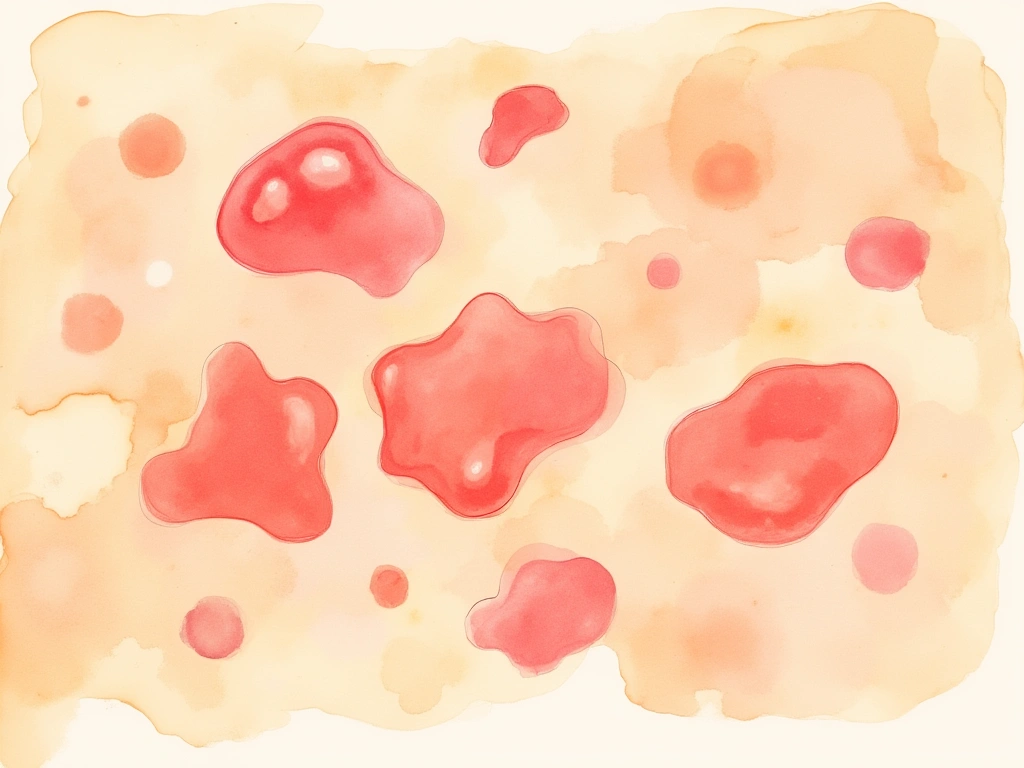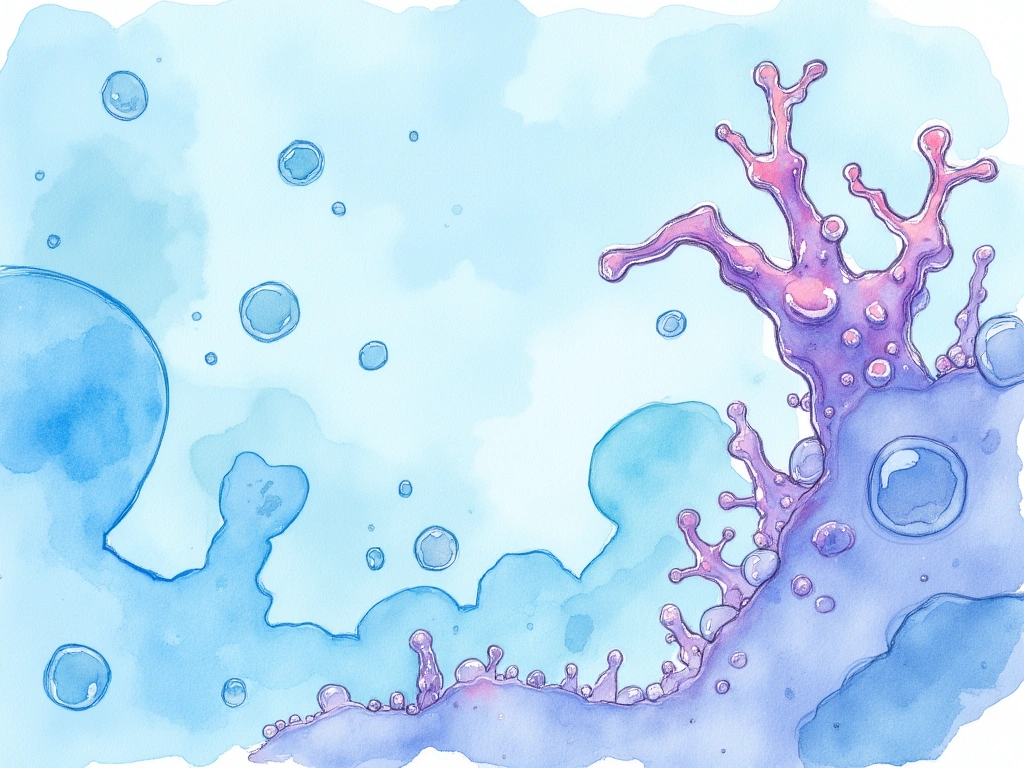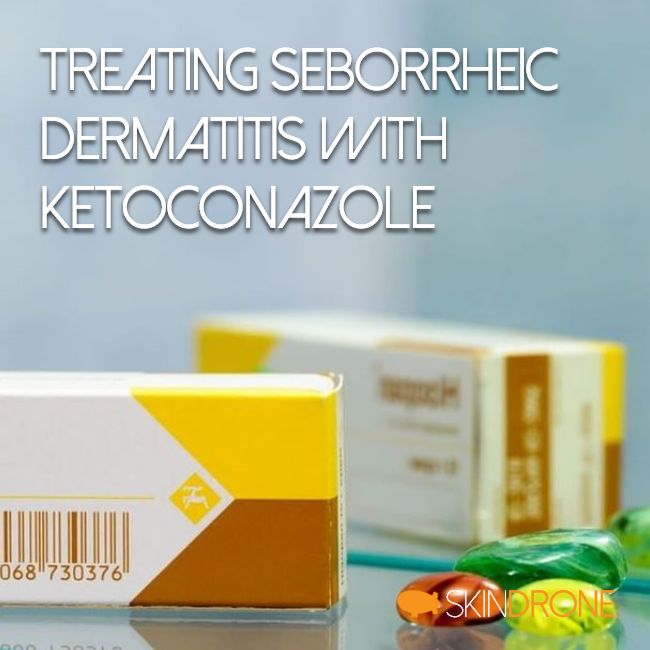- Struggling with red, flaky, itchy scalp or skin?
- Ketoconazole is a leading antifungal treatment for seborrheic dermatitis (SD).
- This review dives into the science behind ketoconazole, its uses, and how it can help manage your SD symptoms.
- Learn about proper application, potential side effects, and long-term management strategies.
- Backed by research and dermatologist recommendations.
Seborrheic dermatitis (SD) is a common skin condition causing redness, greasy scales, and dandruff. It often appears on the scalp, face, ears, chest, and back, leading to persistent itching and flaking. Ketoconazole, an antifungal medication available in shampoos and creams, is frequently recommended by dermatologists to manage seborrheic dermatitis and its bothersome symptoms. This article provides an in-depth, research-focused review of ketoconazole as a treatment for seborrheic dermatitis.
Quick Summary: Ketoconazole is a widely-used topical antifungal for seborrheic dermatitis. It targets Malassezia fungi, reduces skin inflammation, and is typically applied as a 1-2% shampoo or cream 2-3 times weekly for ongoing management. Generally safe when used as directed, potential side effects are mild and may include skin irritation or rash.

Understanding Seborrheic Dermatitis
Seborrheic dermatitis is a chronic inflammatory skin condition characterized by flaking, scaling, redness, and itching. It commonly affects areas rich in oil glands, such as the scalp, face, upper chest, back, and groin. Dandruff is considered a milder form of SD, specifically limited to the scalp [1].
SD is a recurring condition with flare-ups that can appear unpredictably and then subside, only to return later. Symptom severity varies from mild dandruff to persistent, uncomfortable lesions and plaques.
While seborrheic dermatitis can affect anyone, it is more common in infants and adults aged 30 to 60. Individuals with HIV/AIDS often experience more severe and treatment-resistant forms of SD [2].
[IMG: Photographs depicting mild to severe seborrheic dermatitis on scalp, face, ears, chest]
Seborrheic dermatitis is not contagious. Its exact causes are complex and not fully understood, but likely involve a combination of genetic predisposition, hormonal fluctuations, stress, environmental factors like weather, and nutritional status [1].
Treatment aims to control symptoms and prevent future flare-ups. Mild cases may improve with regular shampooing and over-the-counter (OTC) treatments. More persistent cases often require prescription antifungal and anti-inflammatory medications.

How Ketoconazole Treats Seborrheic Dermatitis
Ketoconazole is a leading prescription medication for seborrheic dermatitis. This topical antifungal works by targeting Malassezia yeasts on the skin, which are known to contribute to SD flare-ups.
What is Ketoconazole?
Ketoconazole is an azole antifungal medication. Azoles combat fungal infections by disrupting the fungal cell membrane and blocking ergosterol synthesis [3]. Ergosterol is essential for maintaining the structural integrity of fungal cell walls.
Introduced in 1979, ketoconazole quickly became a popular antifungal due to its broad-spectrum activity [4]. It is used to treat various fungal infections of the skin and nails.
For seborrheic dermatitis, ketoconazole is available in shampoo, cream, gel, or foam formulations for topical application. Concentrations typically range from 1% to 2%.
Ketoconazole’s Antifungal Action Against Malassezia
Research indicates that ketoconazole’s primary mechanism in treating SD is reducing Malassezia yeast on the skin. Malassezia are lipophilic fungi that thrive on sebum and are naturally present on human skin.
In individuals prone to seborrheic dermatitis, Malassezia yeasts are believed to overgrow and trigger an inflammatory response. This leads to the characteristic itching, redness, and flaking of SD [5].
Laboratory studies have demonstrated ketoconazole’s strong antifungal activity against various Malassezia species. These studies show its ability to damage fungal cell membranes and inhibit fungal growth [].
However, a small 2016 study involving 6 SD patients found that while ketoconazole improved symptoms, it did not significantly reduce Malassezia counts after two months of treatment [].
This suggests that while antifungal effects are important, ketoconazole may also alleviate SD through other mechanisms.
Beyond Antifungal Effects: Other Potential Actions
If ketoconazole’s benefits aren’t solely due to reducing Malassezia numbers, what other mechanisms might be at play? Potential alternative pathways include:
- Modifying Fungal Gene Expression: Ketoconazole might decrease the fungi’s ability to cause disease (virulence) without necessarily killing the yeast [6].
- Modulating Human Gene Expression: It could enhance the skin’s protective barrier and strengthen immune responses against Malassezia.
- Anti-Inflammatory Properties: Ketoconazole may reduce inflammation triggered by the yeasts on the skin [].
Further research is ongoing to fully understand how ketoconazole works in seborrheic dermatitis. Its effectiveness likely involves more than just direct antifungal activity.

How to Use Ketoconazole for Seborrheic Dermatitis
Based on current research, here’s how ketoconazole is typically used to manage seborrheic dermatitis flare-ups:
Standard Treatment Protocol
Topical ketoconazole is commonly prescribed for seborrheic dermatitis on the face, scalp, chest, and other affected areas. It’s suitable for both mild dandruff and more severe, widespread lesions.
The standard application is a 1-2% ketoconazole product applied to affected skin 2-3 times per week. It can replace regular shampoo or be used as a leave-on treatment overnight.
For scalp treatment, ketoconazole shampoo is massaged into the scalp, left for 3-5 minutes, and then rinsed out. Creams, gels, and foams are typically applied and left on overnight before rinsing in the morning [7].
Treatment Duration and Maintenance
For initial symptom control, ketoconazole is often used regularly for 4-8 weeks. Due to the chronic nature of seborrheic dermatitis, ongoing maintenance treatment 2-3 times per week is usually needed to prevent flare-ups [7]. Long-term ketoconazole use is often necessary for managing this recurring condition.
Complementary Therapies
Other well-researched treatment options that can be used alongside or as alternatives to ketoconazole include:
- [Coal tar][1]: Offers additional antifungal and anti-inflammatory benefits.
- [Salicylic acid][2]: Helps to exfoliate and remove excess skin scales.
- Phototherapy: Used for severe cases unresponsive to topical treatments.
- Mild corticosteroids: To reduce inflammation (though long-term use can have complications).
Combining ketoconazole with these therapies can improve the overall management of seborrheic dermatitis.
For those interested in natural approaches, some remedies show promise for seborrheic dermatitis:
- [Tea tree oil][3]: Known for anti-inflammatory, antibacterial, and antifungal properties. Dilute and apply topically or use in shampoos.
- [Aloe vera][4]: Soothes and reduces inflammation. Aloe vera gel is a popular topical option.
- [Honey][5]: Has antimicrobial properties and helps retain moisture, potentially reducing scaling.
- [Probiotics][6]: Certain strains, like Lactobacillus paracasei, are being studied for their impact on gut health and immunity, which may influence SD.
- [Stress management][7]: Stress can worsen SD; relaxation techniques like meditation may help.
- [Diet modification][8]: Some individuals find reducing oils, dairy, and sugar beneficial. An anti-inflammatory diet may also be helpful.
Always consult with a dermatologist before starting any new treatment, including natural remedies, to ensure they are appropriate for your specific condition. While natural options can be part of a comprehensive strategy, more research is needed to fully understand their effectiveness.

Ketoconazole Safety and Potential Side Effects
Ketoconazole is generally safe and well-tolerated when used as directed. However, like all medications, it can have potential side effects that require monitoring.
General Safety Profile
The typical 1-2% concentration of ketoconazole used for SD is considered safe for long-term use when instructions are followed [8].
A study of 246 participants found no adverse effects in the 97 using ketoconazole shampoo, while 9 out of 100 people using selenium sulfide reported reactions [9].
Potential mild side effects can include:
- Scalp dryness or irritation
- Itching or burning sensation
- Rash
- Changes in hair color or texture
These side effects are often temporary and may resolve with continued use. Always report any reactions to your doctor.
Liver Toxicity Considerations
Oral ketoconazole has been linked to rare cases of liver toxicity. However, topical ketoconazole, when used correctly, has not shown this risk.
A review of 23 years of adverse event reports found only 8 cases possibly linking topical ketoconazole to liver issues. All of these involved improper use, incorrect dosing, or accidental ingestion [].
Use During Pregnancy and Breastfeeding
Consult your physician before using ketoconazole if you are pregnant or breastfeeding. Safety data is limited, but there is no evidence of birth defects. Potential risks should be discussed with your doctor in relation to the benefits [1].
Patch Testing for Sensitivity
Some individuals may experience allergic reactions or contact dermatitis from topical ketoconazole. Patch testing on a small area of skin for 24-48 hours can help identify sensitivity before broader use [1].

Key Takeaways on Ketoconazole for Seborrheic Dermatitis
- Ketoconazole is an effective topical antifungal medication for managing seborrheic dermatitis outbreaks.
- It works by targeting Malassezia fungi, reducing inflammation, and potentially altering gene expression related to the condition.
- Standard treatment involves applying a 1-2% ketoconazole product to affected areas 2-3 times weekly for ongoing management.
- Topical ketoconazole is generally safe when used as prescribed, though mild side effects are possible. Liver toxicity is a concern with oral ketoconazole but not typically with topical use.
- Talk to your dermatologist to determine if ketoconazole is appropriate for your seborrheic dermatitis treatment plan. It can be a valuable tool for managing flare-ups and reducing symptoms.

In Conclusion
Seborrheic dermatitis is a chronic skin condition that often requires long-term management to control symptoms and prevent recurring flare-ups. For many, topical ketoconazole offers significant relief from itching, redness, and dandruff. When used correctly, in combination with other treatments and natural approaches, ketoconazole can be a safe and effective option for managing seborrheic dermatitis. Discuss your individual needs with your dermatologist to create the best treatment strategy for you.

No Comments
Be the first to start a conversation